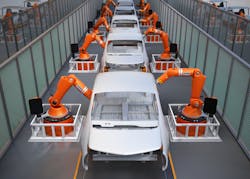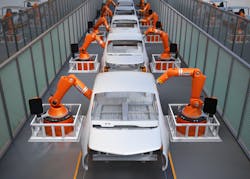Should Robots that Displace Workers Be Taxed?
Bill Gates made quite a stir recently when he said we should tax robots that replace workers. As technology grows at an ever-increasing pace, could this be a way to support and fund programs like Social Security and Medicare for an aging country? I am interested to hear what our audience thinks, so please leave your thoughts in the comment section below.
I am not a financial or tax expert, but my initial reaction to this comment was to wonder: If someone were replaced to increase a company’s profits, would those profits be taxed? An article in Forbes stated, “…The Feds still get some 18% of everything, U.S. government at all levels around 26%...” So would taxing robots that replace workers matter? It might.
All salaried workers pay a 7.65% payroll tax to cover Social Security and Medicare, and higher earners owe another Medicare tax, according to Bloomberg. Employers must match this payment in payroll taxes for each worker. If the worker is replaced by a robot, they wouldn’t have to match this amount. In addition, companies can write off the capital investment of the robot through depreciation deductions. So with fewer workers, there are less payroll taxes, and less money that goes toward the programs Gates was specifically talking about.
While the Forbes article makes sense, I think something was missed. There were two points that stuck out to me…
- Taxing production will reduce it.
- The government gets its tax one way or another.
First, Gates said nothing about taxing production of the worker or robot. Gates said that companies should pay the same income or payroll tax they would have paid if a human were still working at a specific job. This is based off the worker’s income—not productivity. If Gates said, “We should tax productivity,” the tax would generally increase because robots often improve production, and yes I believe taxing productivity would negatively affect a company’s growth. The devil is in the details.
In an interview I had with Mark Tarpenning, he mentioned that advancements in technology might displace the individual, but society as a whole still improves. As things become more automated, we may need a new social contract. Taxing the robots that displace workers might be Gates’ way of starting a conversation on this new social contract.
However, there is a trend in which employment increases with robot sales. If we tax robots that replace workers, shouldn’t there be a rebate or incentive if employment is increased overall due to robots? Technology often increases jobs, and demand for more things that leads to more jobs. While I personally do not like this unsustainable model, it is happening.
While costs decrease, we are buying more. A family may have only had one TV in the past, but today the national average household has 2.93, according to Nielsen.com. This increase in mass consumption, along with increased taxes, means the government is getting plenty of money. I don’t think more taxes are the answer. Engineers already have to compete with the world. This means we need to make it cheap enough to compete with China, but advanced enough to compete with Europe. But until I have a better idea than Bill Gates, I’m going to listen, and look forward to a productive discussion on new and crazy ideas. Please share your thoughts below.


